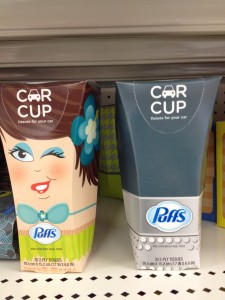Creative versus strategy
March 6, 2015
 Creative versus strategy. For as long as I’ve been in advertising and marketing – there’s been that age-old tug of war. Should advertising and marketing tools be creative/clever/funny/pretty or should the emphasis be on strategically driving the sales message?
Creative versus strategy. For as long as I’ve been in advertising and marketing – there’s been that age-old tug of war. Should advertising and marketing tools be creative/clever/funny/pretty or should the emphasis be on strategically driving the sales message?
As you can imagine – the real answer is both. An ad, website, brochure, e-book etc. that is visually interesting and has a compelling message is much more likely to have impact when it comes to trial or purchase of whatever is being sold.
But sooner or later, compromises need to be make due to budget, timeframes, or other considerations.
When it comes to the creative side of the equation, your materials need to be:
Aligned with the visual brand: Carry the look and feel of your brand through everything you do. Don’t ask your consumers to try to play connect the dots. You should use creative elements to link each piece back to your brand.
Professionally produced: Yes, I know you can make a brochure in Microsoft Publisher. That doesn’t mean you should. I can use a pair of my own scissors to cut my hair too. But I think we can agree it’s going to look better if I let a pro cut it.
Using graphics/photos that connote quality and that you do this for a living: Unless what you sell retails for $3.99 or less, clip art isn’t going to cut it. There was a day when it was new enough that people found it cute or quirky. But today, it just screams cheap.
Attention grabbing: If your ad look like every other ad in the paper – no one is going to look at it. Whether it is with words or visuals – you need to pop from the page, whether that’s on the web, newspaper or trade show booth.
Everything should be on purpose: Think through every element of your piece from font selection to size. If you can’t explain why an element has to be there or be a certain way – it should go.
On the strategic side of the equation, your materials need to be:
One piece, one message: If there is a universal sin in marketing – it’s that everyone writes too much. Cut the copy in half. At least. You can’t possibly tell the whole story in a single ad or marketing piece. So focus on one core message and make your point powerfully and succinctly.
One piece won’t cut it: Consumers want multiple pieces, in multiple places so they can browse, download and review over time. They’re going to be shopping you for a while, so don’t bore them with only one thing to look at.
WITFM: Your audience wants to know how what you sell is going to make their life easier, better, etc. They need to know you’re credible so unless your brand is a household name, you do need to tell them a little about you. But they want the focus to be on them so think 80/20 and no, you’re not the 80.
Location, location, location: If I can’t find you, you don’t exist. And I want to find you in multiple places. Being found on Google and the other search engines is mandatory today. But you also need to know where else your consumers go to look for you and be there with bells on. Don’t assume that online is the only game in town.
Most B2C marketers tend to lean too heavily on the pretty (think the Super Bowl ads) and most B2B marketers are a bit like the old Dragnet’s Joe Friday – the facts ma’am, just the facts. (Think most niche B2B magazine ads). The key is finding the balance between the two because at the end of the day creative versus strategy isn’t an either or. You need both.
More
 As a writer just typing the question – is creativity bad for marketing – hurts a little.
As a writer just typing the question – is creativity bad for marketing – hurts a little. No matter what you do for a living, you need to be creative. Innovative and fresh thinking are always in demand, whether you’re a cop, a plumber, or a marketing pro.
No matter what you do for a living, you need to be creative. Innovative and fresh thinking are always in demand, whether you’re a cop, a plumber, or a marketing pro.



 It seems like one of the goals I hear more and more is… “and we want it to go viral.” I translate that to mean — we want a lot of people to see it.
It seems like one of the goals I hear more and more is… “and we want it to go viral.” I translate that to mean — we want a lot of people to see it.








